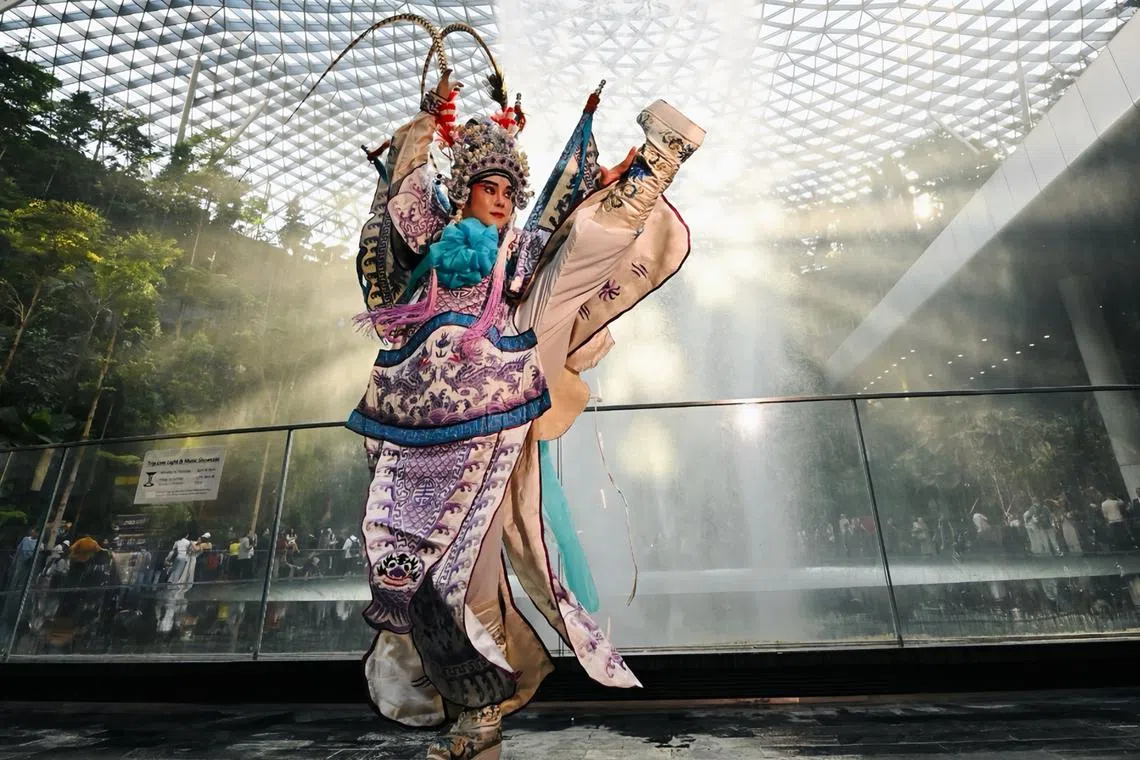For subscribers
Commentary
Keeping it alive: How Chinese opera in Singapore is adapting to the age of TikTok
Justice Bao warning about scams is just one costume change for an ancient art form drawing new audiences.
Sign up now: Get ST's newsletters delivered to your inbox

Chinese opera, in all its vivid colours, is evolving and making its presence felt on multiple platforms – theatres, schools, community clubs, malls and online.
PHOTO: LIEW TONG LENG
Follow topic:
- Chinese opera in Singapore is not dying, with practitioners and a chorus of supporters keeping it alive.
- Accessibility is being improved through English and Mandarin surtitles, new scripts, cross-disciplinary collaborations and integration of modern elements to attract younger audiences.
- Individuals like Nick Shen and groups such as Nam Hwa Opera are actively promoting Chinese opera through workshops, digital media, and school outreach, ensuring its continued relevance.
AI generated
The clang of cymbals signalled the start of a “wayang” or Chinese street opera show. As the characters with painted faces and elaborate costumes took to the makeshift stage, members of the audience – often entire families from the neighbourhood – settled in their plastic chairs, rattan fans in hand, to enjoy an evening’s entertainment under the stars. Nearby, hawkers on pushcarts enjoyed brisk business peddling snacks like satay or muah chee.
This common scene in the 60s and 70s has faded into our collective memory today.


